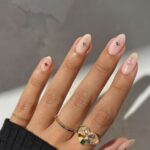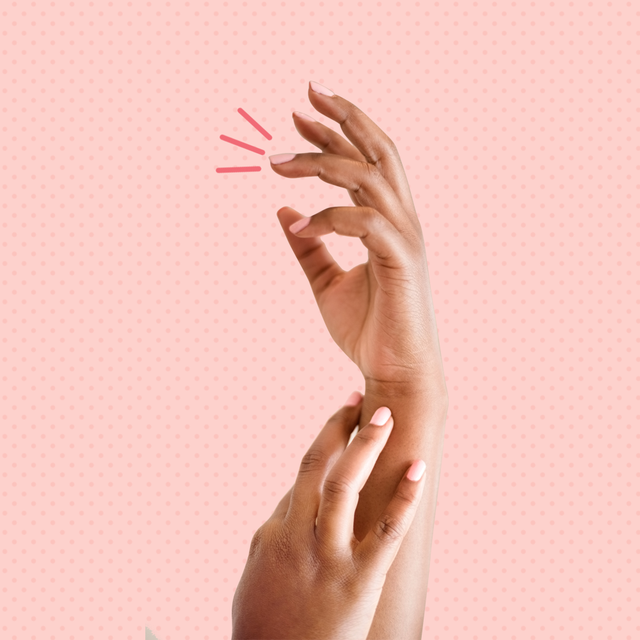 Getty Images
Getty Images
We’ve been independently researching and testing products for over 120 years. If you buy through our links, we may earn a commission. Learn more about our review process.
Whether you’re the type of person who religiously paints their nails as a form of self-care or someone who’s constantly picking and biting at their cuticles, we all yearn for healthy, perfectly manicured nails. Well-groomed nails make you look instantly polished (pun intended!) and can even make hands appear more youthful.
To counteract the effects of extra hand-washing and skipped salon visits, we talked to nail-care experts to find out exactly what you should be doing for your nails — but first, how can you tell if your nails are healthy? Here’s what to look for.
Signs of Healthy Nails:
- Nail plates are a pinkish-white color
- Cuticles are existent (so don’t cut them!)
- Nails and white tips are even lengths
- Prominent half-moon shaped white section (called the lunula) at nail base
Signs of Unhealthy Nails:
- Peeling or splitting nails could be dryness or the result of vitamin deficiency
- Tiny white spots usually mean you’re biting your nails or painting them too often
- Horizontal grooves could be from stress, high fevers, or jamming your finger
- Red, swollen skin around nails could be from removing or biting cuticles
- Spoon-shaped nails could be a sign of iron deficiency or anemia
If you’re concerned about your nail health, it’s important to consult a dermatologist. Since your nails are super visible, it’s easier to tell if an issue arises — meaning you can treat it early if you get help, says Dana Stern, M.D, a dermatologist and nail care specialist in New York. Now here’s how to get strong, healthy nails:
1. Keep your hands very clean.
After you wash your hands, make sure nails are thoroughly grime-free by first removing all traces of polish with an acetone-free remover, which won’t dry out nails. Apply soap to a clean toothbrush, then gently scrub nails and surrounding skin to remove dirt and exfoliate any dead skin without harsh, drying chemicals, advises Ava Shamban, M.D., a dermatologist in Los Angeles and author of Heal Your Skin.
2. Be gentle on your nails.
Your nails are delicate, so treat them that way. Avoid using metal tools under nails, as too much digging can cause the nail plate to separate from the skin (a condition called onycholysis), common for people over 50, says Dr. Stern. Cleaning with chemicals and washing dishes by hand can also weaken nails. Guard them by wearing rubber, vinyl, nitrile or plastic gloves, says New York City dermatologist Janet Prystowsky, M.D., Ph.D.
3. Clip your nails regularly.
Consistent trims are as important to your nails as they are to your hair, says Dr. Prystowsky, and make nails less prone to snags and breakage. So aim to clip them every two weeks, adjusting frequency as needed once you see how your nails respond.
Related Story
 The Best Nail Shape for Your Hands
The Best Nail Shape for Your Hands
4. Prioritize nail health over length.
Long nails are elegant, but if you’re someone who has struggled with hangnails or breakage, Dr. Shamban recommends that you keep your nails short — at least for period of time as you allow them to grow stronger. A shorter style with rounded edges looks neat and tends to be easier to manage, so you won’t have to subject your nails to extra wear and tear. As long as each nail is uniform in shape and matches its nine neighbors, you won’t miss the added length.
Mont Bleu Premium Set of 3 Crystal Nail Files
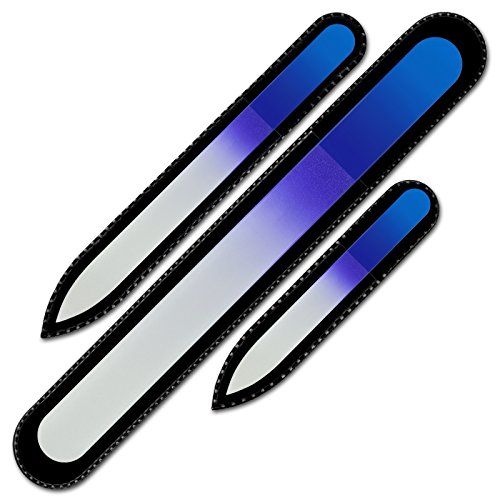
Mont Bleu Premium Set of 3 Crystal Nail Files
$10 at Amazon
5. Always keep a nail file on hand.
If your job or workout routine exposes your nails to potential damage, Dr. Prystowsky advises keeping a nail file handy for on-the-spot buffing of any rough edges. For the smoothest finish, work in one direction with the grain of your nail.
Instead of an emory board, which can cause nails to peel and snag, try a glass (also called crystal) nail file. "A glass file will create an even edge to the nail and can be used on the weakest, brittle, and damaged nails," Dr. Stern says.
6. Don’t forget to take care of your nail tools, too.
Disinfecting your nail tools between uses is just as important as regularly cleaning your makeup brushes, and for the same reason — bacteria. To keep your nails infection-free, Dr. Prystowsky advises washing metal tools with soap and water and then wiping down with rubbing alcohol. And don’t forget to regularly replace disposable tools like emery boards. There’s no reason to continue using a tattered tool when it’s so easy to rotate in a new one for a few bucks.
7. Leave your cuticles alone.
Deborah Lippmann It’s A Miracle Cuticle Oil
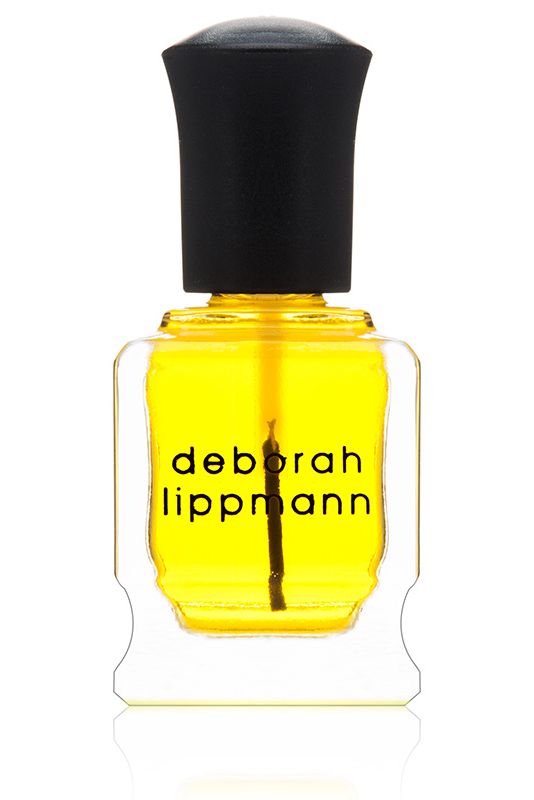
Deborah Lippmann It’s A Miracle Cuticle Oil
Now 20% Off$16 at Dermstore
The cuticle has a very important purpose to serve: It seals the area at the base of the nail. So think twice about cutting or removing the cuticle, because it can break that seal of protection, leaving you vulnerable to bacteria and the possibility of infection (as well as painful and unsightly tears). Taking care of your cuticles also helps minimize those dreaded hangnails, Dr. Stern says.
If you need to push back your cuticles, Debbie Palmer, D.O., the medical director of Dermatology Associates of New York in Harrison, NY, recommends doing so once per week after you shower (when skin is soft) using a wooden orange stick. Finish by massaging cuticles and nails with a cuticle oil or treatment. "Serum-like strengtheners are absorbed quickly and typically contain moisturizers to rehydrate dry, brittle nails," GH Beauty Lab chemist Danusia Wnek says.
8. Protect your nails with a base coat.
When you’re painting your nails at home, don’t skip the base coat. Dr. Prystowsky points out that this step both shields the nails from being stained by polish and helps the color look more saturated and opaque with just one coat. Even without color, "strengthening varnishes leave a shiny hard coating on nails; reinforce tips, making them appear thicker; and can protect against damage," says Wnek. And if you really want to take things to the next level, Dr. Shamban suggests adding a coat of clear gloss between each layer to add extra shine and protection.
9. Read the labels on your polish.
Just as with makeup and skincare, not all nail polish brands are created equal, so make sure you’re buying or using a good product. Dr. Debbie Palmer urges you to steer clear of polishes containing toxic chemicals like dibutyl phthalate, formaldehyde, and toluene, as these toxins can contribute to brittleness, splitting, and cracking.
Seche Vite Dry Fast Top Coat

Seche Vite Dry Fast Top Coat
$6 at Amazon
10. Use a top coat to prevent nail chips.
Don’t think you can skip a top coat, either. This step is just as important, as the top coat seals in the polish’s color and adds a much-needed gloss finish to your digits. Dr. Prystowsky recommends adding another top coat layer every three days to decrease chipping, so you’ll get the most out of your manicure.
11. Indulge in acrylic or gel treatments sparingly.
Any nail expert you talk to is going to do their best to steer you away from acrylic or gel manicures — as long-lasting and convenient as they are because they’re very hard on the nail. But if you’re keen on getting them, there are some ways to minimize the damage to your hands and nails.
The main issue with a gel manicure is the exposure to UV light in the drying device, which can damage the skin below and around the nail, leading to an increased risk of cancer. To help reduce that risk, Dr. Prystowsky recommends applying a sunscreen with an SPF of 30 to 50 before the procedure to help block the damage, or you can try special gloves that expose only the nails themselves, shielding the rest of your hands from the harmful UV rays.
There’s also a professional service that the Good Housekeeping Institute’s Beauty Lab found won’t ruin your nails: CND’s Shellac Luxe salon service, which won a Good Housekeeping Beauty Award in 2019.
12. Give your nails a break.
Save the elaborate nail art and those bold colors with lots of pigment for the weekend, and during the rest of the week, give your nails time to rest and repair with a clear gloss. Dr. Shamban warns that going from one strong polish color to another without giving your nails a break can dry them out, turn them yellow, and over time, even weaken the structure of the nail.
Dr. Stern agrees, saying that nail polish removers could also be the reason your nails are weak. Sometimes going all natural "can be just the thing that your nails need in order to rejuvenate and refresh," she says.
FROM OUR BEAUTY SCIENTISTS
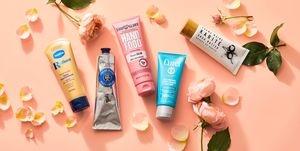 The Best Hand Creams to Buy This Year
The Best Hand Creams to Buy This Year
13. Moisturize your hands and nails regularly.
You moisturize your face before bed, so do the same for your nails. New York City nail expert Holly Falcone likes to use a mix of almond and avocado oils to keep cuticles and nails hydrated while she gets some shut-eye, but any nutrient-rich oil or moisturizer will do. In a pinch, you can even use a dab of lip balm. "Efficacious formulas contain humectant ingredients like glycerin, emollients such as fatty oils and occlusives like silicones, which work together to hydrate nails and skin," says Wnek.
14. Wear gloves when doing dishes.
Playtex Living Reuseable Rubber Cleaning Gloves
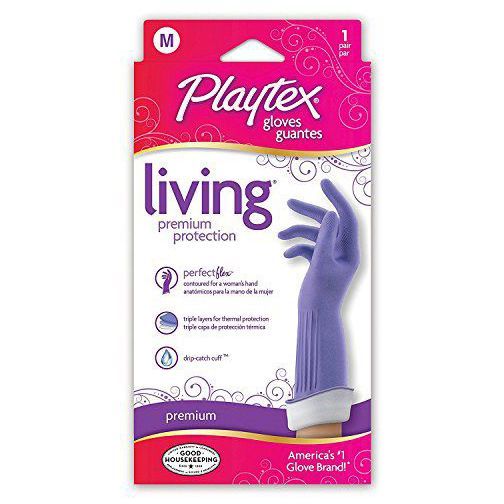
Playtex Living Reuseable Rubber Cleaning Gloves
$18 at Amazon
We’ll say it again: Whenever you’re cleaning with harsh chemicals, gardening, or doing anything that involves soaking or dirtying your hands, you need to wear rubber, vinyl, nitrile, or plastic gloves — some of which have a cotton liner. Cleaning dishes in hot, soapy water sans gloves can weaken the nails, while getting them caked with dirt from gardening will require a level of cleaning that you want to avoid wherever possible.
Similarly, when weather is chilly, remember to wear a pair of mittens or gloves so that the cold air and wind don’t undo the hard work you did moisturizing, leaving you with dry, flaky, scaly skin.
15. Load up on protein-rich food.
Your fingernails are made of a protein called keratin, so just as with the clarity of your skin or the shine of your hair, you can improve your nails by tweaking your diet. Falcone advises adding vitamins and supplements like biotin, Vitamin E, and fish oil to your daily regimen, while Dr. Palmer recommends protein-rich foods like beans, fish, and nuts. The one thing every expert agrees on: Once you hit on the combination that works for you, you’ll be rewarded with stronger, clearer nails.

